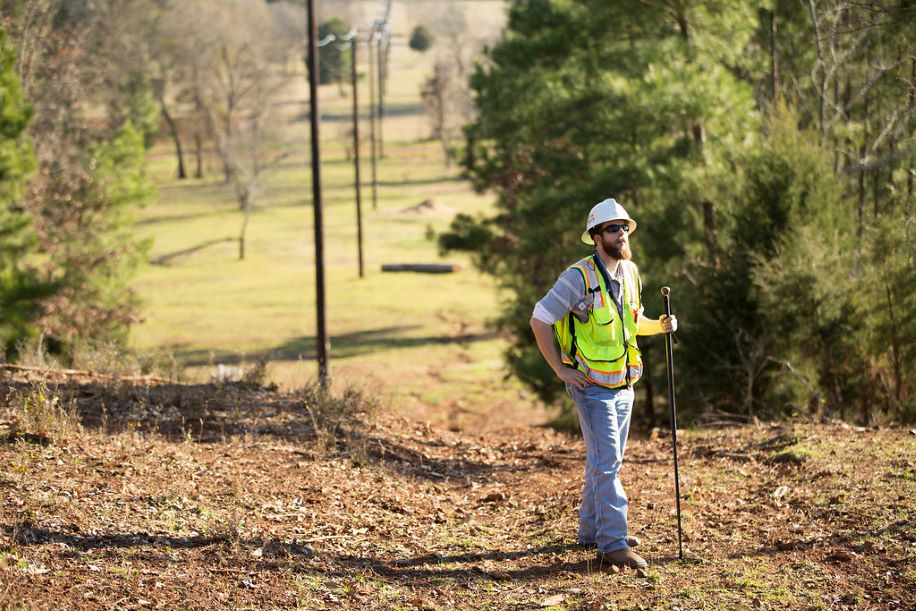S.T.O.P. for Lone Worker Safety

By Anna Davis
Picture this: You’re working in a remote area, by yourself, and cell transmission is very limited. What happens if you find yourself turned around and can’t get your bearings straight? ACRT recommends remembering to S.T.O.P. for lone worker safety if you get lost.
- Stop. Acknowledge that you may be lost, and stay calm. If you find yourself in an unfamiliar, wooded area, tie an article of clothing or material you have to a tree. Circle around the tree and look for a trail or exit out of your present spot.
- Think. Don’t do anything until you assess your situation. If you planned for call-in and call-outs, someone will know you if you don’t return on time.
- Observe. What do you see around you that could help? What’s the terrain like? How about the weather? Listen to the surrounding sounds and smells.
- Plan. Once you’ve observed the terrain, thought about all possible scenarios, and accepted your situation, it’s time to plan. Be sure to address any immediate issues such as injuries, approaching storms, etc.
EHS Today describes lone workers as “people who perform their jobs alone, without someone else present and without any supervision. Lone workers are also people who are in the same building or area but are out of hearing distance.”
As the former Area Safety Representative chairwoman at ACRT and manager of its Ready Force® team, I often preach the importance of preparedness to our lone and remote workers. Our Ready Force personnel can be anywhere in the country in a short amount of time to assist utilities with storm response and restoration efforts, but with this comes the unknown.
Preparation is key. It’s important to prepare before a situation happens by putting yourself in the best position to react in the way needed. Give yourself the best odds to avoid injury and incident by researching the area, where you’re going to stay, the weather you’ll encounter, the length of time you plan to stay, and so on. Become an expert in that area.
For those who classify as lone workers, consider these steps when working in remote areas.
- The simplest and most vital step is to inform someone of where you are going and when you plan to be back. This gives your peers an idea of when to worry and where to start looking.
- Ensure your cell is fully charged when leaving your vehicle.
- Carry a whistle for emergency use.
- Fill up in remote areas when you have a half tank of gas in case you need to overnight in your vehicle.
- Don’t travel at night. Plan your day so you can get in and out without dealing with low light levels.
- Check weather forecasts before you leave and while en route. Change your plans if necessary.
- Ensure your vehicle is well maintained and suitable for the terrain and area through which you’ll be traveling.
- Ensure you have a reliable spare key to your vehicle.
- Keep emergency water, dry clothing, a flashlight with extra batteries, and non-perishable food items in your truck. Always make sure your first aid kit is fully stocked and items are not expired.
- The four vital requirements to support life are water, shelter, warmth, and food. Always ensure you set out with adequate supplies if you’re stranded. This is important even if you are planning to go to a remote area for only a short period.
According to EHS Today, “Lone workers face a range of safety hazards as long as the range of industries that employ people who work alone. The most common — and this isn’t only for lone work — are slips, trips, and falls.”
When possible, use the “buddy system,” and always have someone to check in and out with when working alone, especially in areas with poor cell service. Make sure someone knows where you are working.
Ultimately, regardless of the industry we belong to, we must take ownership of our safety. By staying prepared, taking personal accountability, and keeping an open line of communication with one another, we can continue to work toward a safer future.
Anna Davis is an operations manager at ACRT. She is an ISA Certified Arborist and oversees the ACRT Ready Force team. Davis is a member of the ACRT Services family of companies’ Wellness Committee, a member of the ACRT Safety Committee, and formerly served as chairwoman of the Area Safety Representative group for ACRT. She also serves on the ACRT Services Board of Directors and its governance committee. Davis holds a bachelor’s degree in geography with GIS from the University of Alabama in Tuscaloosa.


